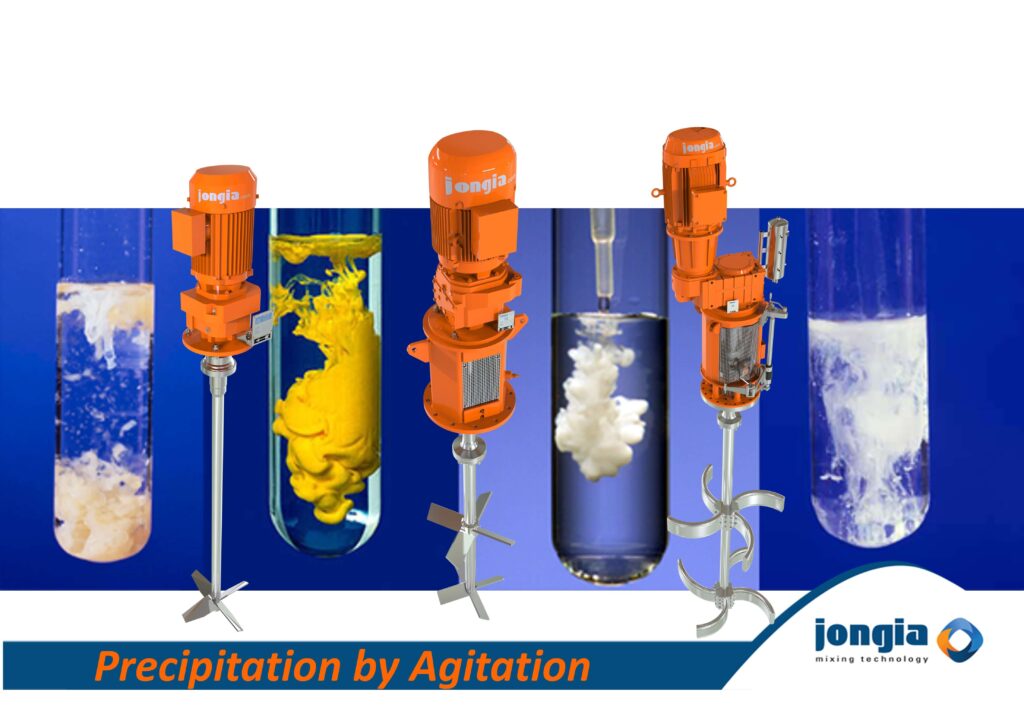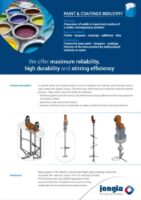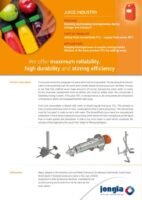Precipitation is a fundamental concept in chemistry and can occur under different conditions, including with and without agitation.
Let’s explore these scenarios to understand how they affect the precipitation process.
Precipitation With Agitation
Precipitation with agitation involves mechanical stirring or shaking of the solution during the formation of the precipitate. Agitation can affect the size and purity of the precipitate. Typically, stirring results in smaller, more uniform particles because it promotes rapid nucleation, where many small crystals begin to form simultaneously. Agitation can also help to distribute the reactants uniformly, ensuring the reaction goes to completion and potentially preventing the formation of unwanted by-products.
Example:
When a solution of barium nitrate is mixed, the barium nitrate and sodium sulfate solution is stirred while the reactants are being mixed, the resulting barium sulfate precipitate will be finer and more evenly distributed throughout the solution before settling.
Precipitation Without Agitation
Precipitation without agitation refers to the process where a precipitate forms in a solution without any external force or stirring. This can occur when two soluble reactants are mixed, and a product of their reaction is insoluble, forming a solid that settles out of the solution. In this scenario, the lack of agitation often results in larger, more well-formed crystals because the molecules have more time to align themselves into a crystal lattice as they come out of the solution.
Example:
Continuing with the barium sulfate example, with a solution of sodium sulfate, barium sulfate precipitates out. If the mixture is left undisturbed, the barium sulfate crystals will slowly form and settle at the bottom of the container.
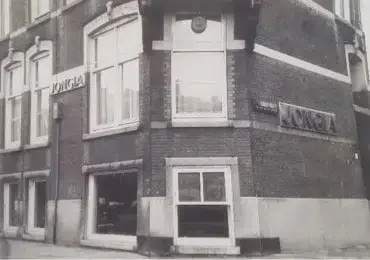
Our History
From the moment Jongia was founded in 1937 we have been evolving structurally over the years. Learn more about our company’s history with the summary of most important moments highlighted in a timeline.
Precipitation With Agitation
Precipitation with agitation involves mechanical stirring or shaking of the solution during the formation of the precipitate. Agitation can affect the size and purity of the precipitate. Typically, stirring results in smaller, more uniform particles because it promotes rapid nucleation, where many small crystals begin to form simultaneously. Agitation can also help to distribute the reactants uniformly, ensuring the reaction goes to completion and potentially preventing the formation of unwanted by-products.
Example:
Continuing with the barium sulfate example, if the barium nitrate and sodium sulfate solution is stirred while the reactants are being mixed, the resulting barium sulfate precipitate will be finer and more evenly distributed throughout the solution before settling.
Summary
The choice between precipitation with or without agitation can be important in various applications, such as in chemical manufacturing, materials science, and environmental technology. Without agitation, the process might yield larger, purer crystals, useful in cases where crystal size and purity are critical.
With agitation, the particles are smaller and more uniform, which can be beneficial in processes where the surface area is important, such as in catalysts or pharmaceutical preparations. That is precisely why it is wise to consult with Jongia Mixing Technology. If the composition of the final product is crucial and valuable, the contribution of Jongia as an expert is equally valuable!
Related News
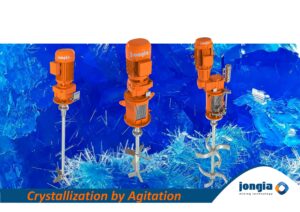
Difference between precipitation and crystallization
Precipitation and crystallization are both processes involved in the formation of solid substances from a solution, but they occur under different conditions and result in different outcomes. 1. Precipitation: Precipitation occurs when a solid substance forms from a solution as
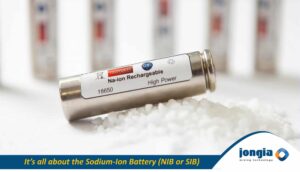
Is Sodium-Ion the next generation sustainable Battery?
The sodium-ion battery (NIB or SIB) is a type of rechargeable battery that uses sodium ions (Na+) as its charge carriers. Its working principle and cell construction are almost identical with those of lithium-ion battery (LIB) types, but replace lithium with sodium.
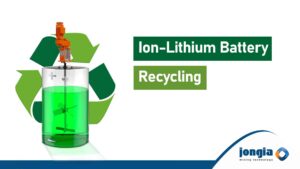
What is the recycling process for lithium
Current commercial lithium ion batteries mainly contain transition metal oxides or phosphates, aluminum, copper, graphite, organic electrolytes containing harmful lithium salts, and other chemicals. Therefore, the recycling and reuse of spent lithium ion batteries has been paid more and more


